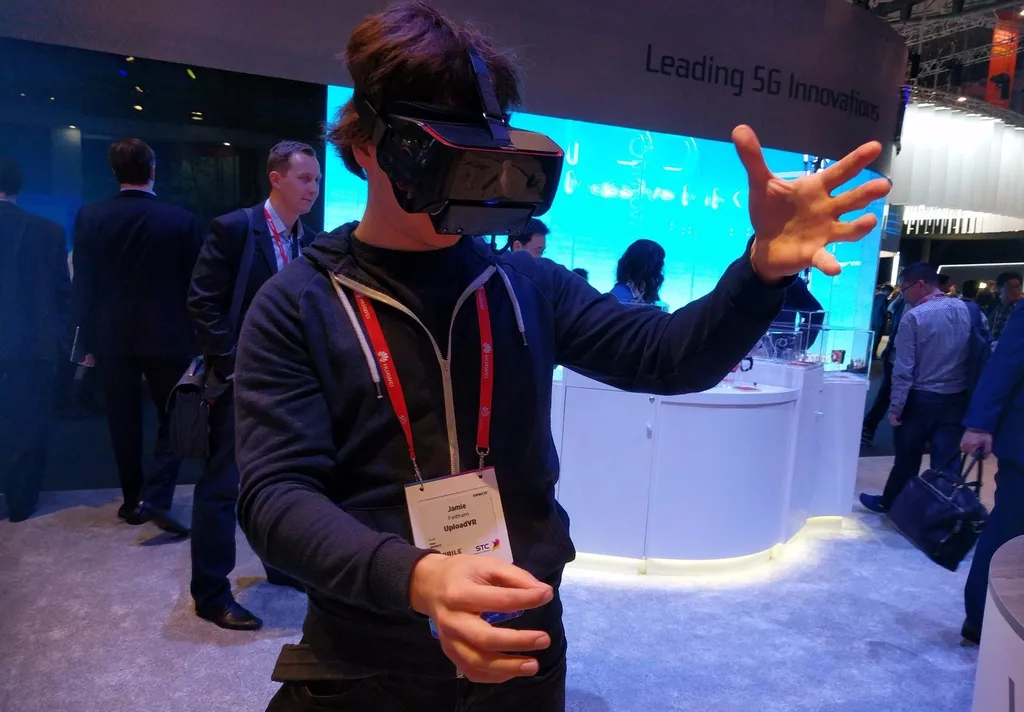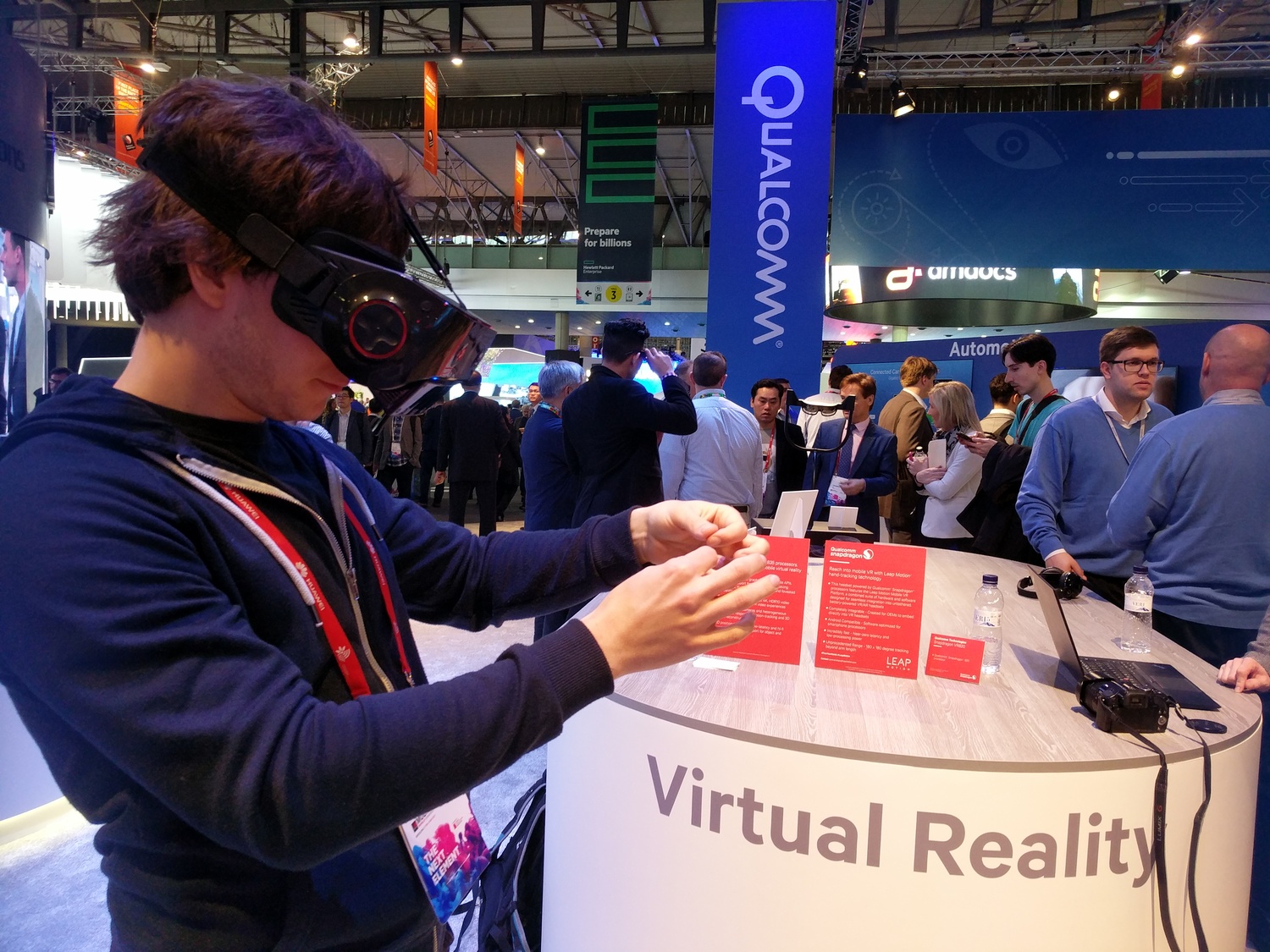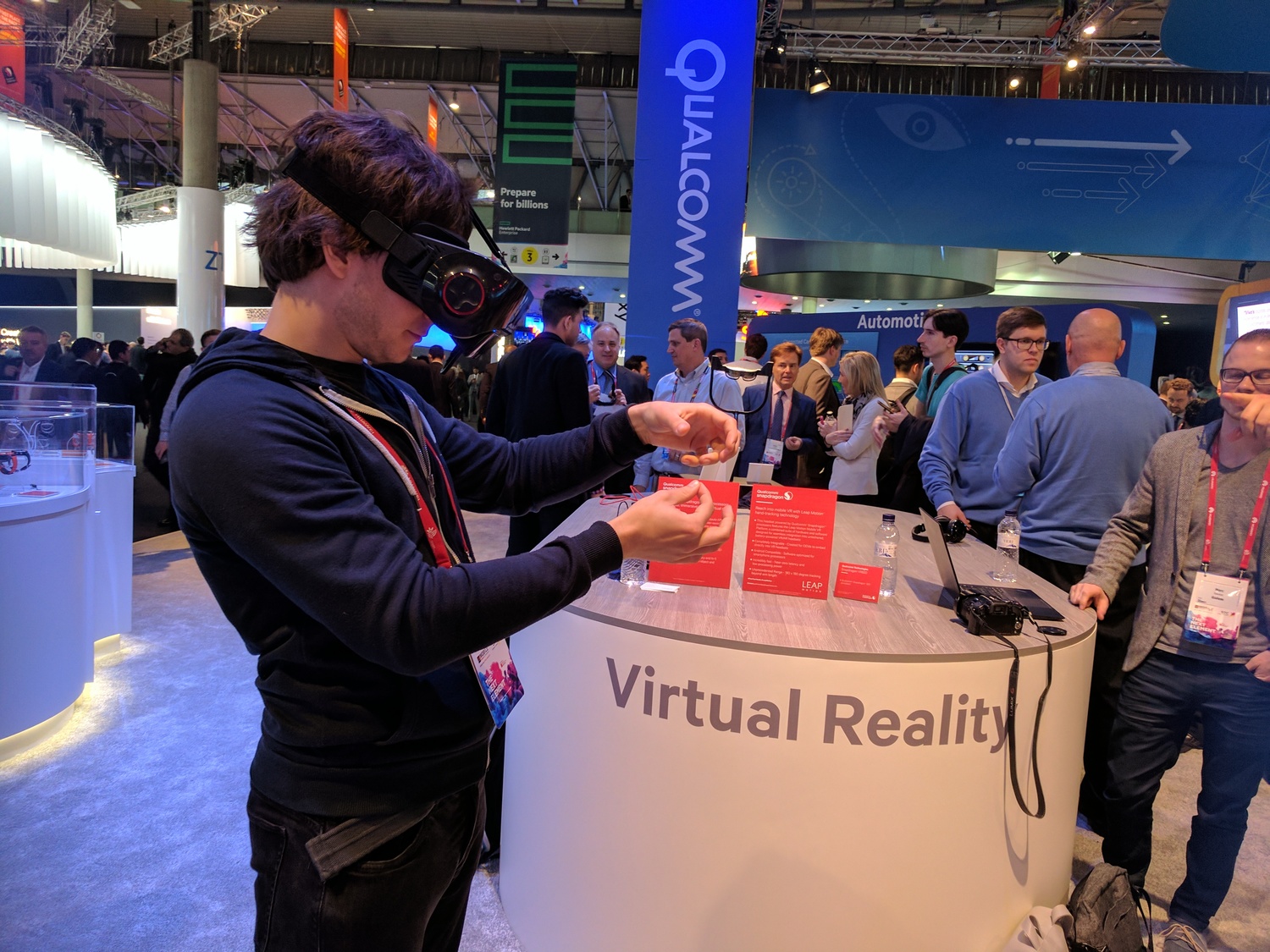Finally jumping the hurdle of VR input will eventually require a combination of many different technologies currently in their infancy. Hand-tracking looks likely to play a big part in that future, and Leap Motion is one of a few companies leading the charge in this department.
Leap’s latest, well, leap is to bring its controller-free hand tracking tech to mobile VR headsets. We saw a primitive implementation of the system at the end of last year, but since then it’s been officially integrated into its first mobile VR headset, Qualcomm’s standalone reference design kit that other companies will be able to take and sell their own branded devices with.
That ultimately means that Leap Motion might be officially integrated into not one but several standalone devices within the coming year. Hand-tracking is entirely optional for other companies to include, but doing so, according to the Leap, is relatively inexpensive (the original external sensor cost just $80 at launch) and adds very little to the overall weight of a device.
It obviously also doesn’t require any additional controllers or other hardware, and even if it is integrated using it in software is still optional. That’s important; many third-party or experimental VR peripherals not made by headset manufacturers don’t garner much support, but being embedded inside a headset and not forcing its use upon people is brilliantly unintrusive. Developers don’t have to shoehorn support in, and don’t have to worry about any other install base than that of the headset itself, and the user is left with options.
We’ve already seen a different kind of hand-tracking in a similar reference design kit from Intel at CES, though I was intrigued to see this option simply because, of the two reference designs, Qualcomm’s is the one I’ve personally found to offer better inside-out tracking, at least in this early stage.
Leap’s demo was its usual one, in which you can put your hands together, pinch, and stretch out to create different sized blocks. We’ve seen it many times but it worked well on Qualcomm’s device, with the usual glitchy caveats: fingers moving when they weren’t supposed to, hands sticking to blocks when a grabbing motion wasn’t being made, and gestures occasionally not being recognized.
Hopefully Leap can iron out these issues even further before it starts showing up in consumer headsets, though what’s here already is undeniably impressive.
Ultimately, the main questions about Leap are the same ones facing any hand-tracking software on any VR headset right now. While it’s liberating to wave your hands in the air, actually interacting with items lacks haptic feedback. There’s nothing to make you feel the button you push or stop you putting your hand through a desk. There is work going on in this area, but it’s still very early and we doubt we’ll see any kind of integration with Leap anytime soon.
Still, the company envisions its tech being used with productivity apps and other such software that isn’t necessarily as reliant on haptic feedback. Convincing others that this is the perfect input mechanism for those apps that form such a promising part of VR’s future may be key to Leap and other hand-tracking tech staying relevant as more popular devices like Oculus Touch and the HTC Vive wands continue to be improved and refined.
Hand-tracking won’t be the dominant form of VR input for some time, but that doesn’t necessarily matter to Leap Motion. For now, its technology can quite happily exist as additive to mobile and PC-based VR headsets, and not essential to them. That’s why adding it to Qualcomm’s reference design makes so much sense for the company; it’s going to encourage manufacturers to implement the tech and grow a wider install base of hand-tracked headsets organically. Hopefully, great software will follow suit.
Leap Motion’s integration in the Qualcomm reference design is smart technology, but it’s an even smarter business move.






























